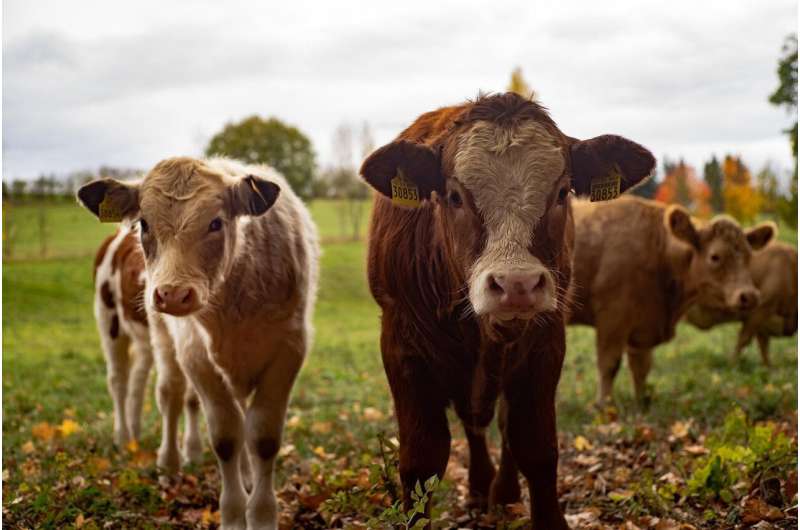Foot-and-mouth disease: The gaps in South Africa's efforts to keep it under control

In mid August, South Africa's minister of agriculture, land reform and rural development Thoko Didiza responded to outbreaks of foot-and-mouth disease with a nationwide ban on the movement of cattle for 21 days. By late August, 127 cases of the disease had been recorded in six of the country's nine provinces. The Conversation Africa spoke with Rebone Moerane and Melvyn Quan about the disease, its effects and the government's mitigation strategies.
What is foot-and-mouth disease?
It's a viral disease that affects cloven-hoofed animals, such as cattle, sheep, goats and pigs, and wild animals such as buffalo. The disease is caused by foot-and-mouth disease virus. The virus is extremely contagious; it can travel on air currents and infect animals many kilometers away from the source. Animals can also be infected by close or direct contact with other infected animals, or contaminated people, vehicles and equipment.
As the name suggests, the disease can be recognized by blisters and ulcers on areas where there is friction, such as the mouth, feet and teats. Not many animals die from the disease. But there are production losses related to reduced milk yield, growth of affected animals and poor quality wool.
The main economic impact of the disease comes from trade bans and the inability to move or sell animals and animal products from affected areas.
South Africa has different zones where different levels of foot-and-mouth disease control are applied. In the north and the east, the Kruger National Park and northern KwaZulu-Natal province are considered the infected zone. This is surrounded by a protection zone, in which cloven-hooved and related wild animals are vaccinated against the virus. This provides a barrier to the disease spreading to the rest of the country. There's also a zone which is under close surveillance. The rest of South Africa is normally considered free of the disease.
The recent outbreaks have occurred in the foot-and-mouth disease free zone. As a result, South Africa cannot export animals and fresh meat to other countries. According to official statistics, South Africa "produces approximately 21.4% of the total meat produced on the (African) continent and 1% of global meat production." The livestock industry also contributes 34.1% to the total domestic agricultural production and provides 36% of the population's protein needs. This shows how economically damaging the current situation is.
Are there any risks to human health?
Humans cannot be infected with foot-and-mouth disease virus, so meat from an infected animal is safe for human consumption. However, the infected meat can act as a source of infection to other cloven-hoofed animals if it is not deboned and canned, salted or heated to inactivate the virus.
This virus should not be confused with hand, foot and mouth disease; its only relation is that it belongs to the same family of viruses.
What is the current situation in South Africa?
There are three outbreaks. The first started in May 2021 in KwaZulu-Natal, the second in March 2022 in Limpopo and the third, also in March 2022, began in the North West province and spread to the Free State, Gauteng and Mpumulanga provinces. There are currently 127 open cases—that's a lot.
This resulted in the minister's announcement of a 21-day movement ban. Animals on affected properties are being quarantined and in some cases culled. There's a vaccination drive in the affected areas. All vaccinated animals should be branded with an "F" mark to show they've been inoculated against the virus. Surveillance has also increased: cattle are being examined for clinical signs of the disease; blood is being drawn to test cattle for antibodies that would indicate a previous infection.
Is there anything else the government should be doing?
The government has tried to implement measures in line with the gazetted policy to control the disease. But there are several challenges with this approach.
The first is that the control of any animal disease is not solely the government's responsibility. Other stakeholders—like farm owners and managers—are obliged by legislation to prevent the spread of disease.
Unfortunately most farmers, especially small-scale rural farmers, might not be aware of such responsibility. They may not have the means or have been equipped with the necessary tools to identify sick animals early and report to a state veterinary official or a private veterinarian. Those small-scale rural farmers in the infected zone need more support during outbreaks and during normal times. For instance, there's no reason why the government could not invest in assisting farmers in this zone by providing processing plants for the proper slaughtering and processing of meat in line with international standards.
Another problem is that the current measures are unfortunately short term and don't take all the issues at play into consideration. The veterinary authority, which is part of the department of agriculture, land reform and rural development, needs extra funding, through a special allocation from the national treasury, to tackle these outbreaks and continue its normal work. This requires political support from cabinet and parliament.
South Africa relies on its neighbors, mainly Botswana, to supply it with foot-and-mouth disease vaccines. This needs to be addressed to ensure prompt action against future outbreaks—the country must be able to produce and distribute vaccines fast.
It is time for the country to look at a long term foot-and-mouth disease plan that accommodates all role players.
Provided by The Conversation
This article is republished from The Conversation under a Creative Commons license. Read the original article.![]()




















